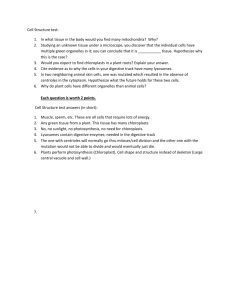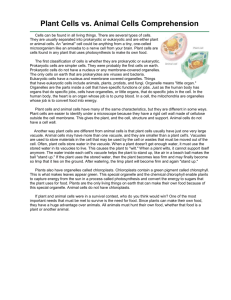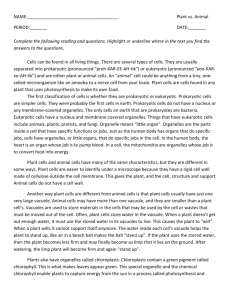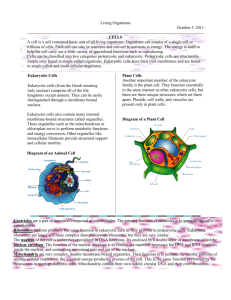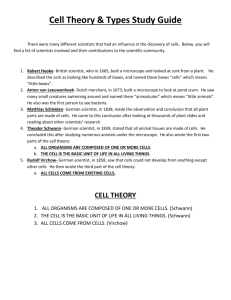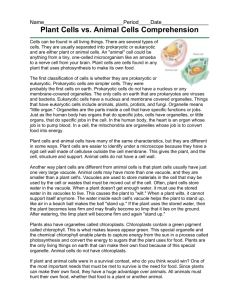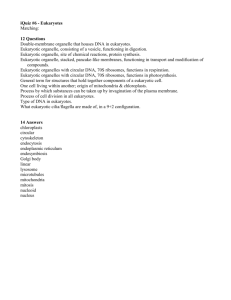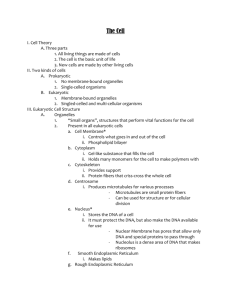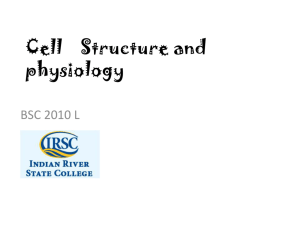Basic Biological Principles Study Guide-1
advertisement
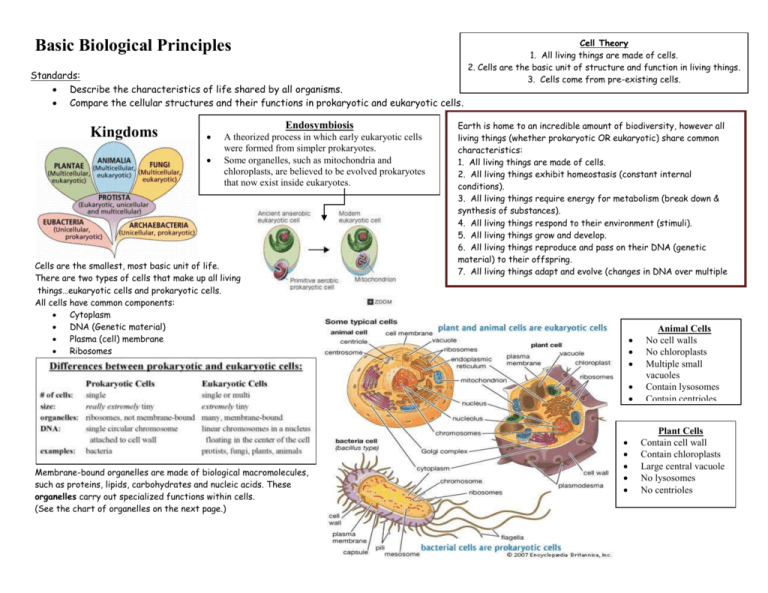
Basic Biological Principles Standards: Describe the characteristics of life shared by all organisms. Compare the cellular structures and their functions in prokaryotic and eukaryotic cells. Kingdoms Endosymbiosis A theorized process in which early eukaryotic cells were formed from simpler prokaryotes. Some organelles, such as mitochondria and chloroplasts, are believed to be evolved prokaryotes that now exist inside eukaryotes. Cells are the smallest, most basic unit of life. There are two types of cells that make up all living things…eukaryotic cells and prokaryotic cells. All cells have common components: Cytoplasm DNA (Genetic material) Plasma (cell) membrane Ribosomes Cell Theory 1. All living things are made of cells. 2. Cells are the basic unit of structure and function in living things. 3. Cells come from pre-existing cells. Earth is home to an incredible amount of biodiversity, however all living things (whether prokaryotic OR eukaryotic) share common characteristics: 1. All living things are made of cells. 2. All living things exhibit homeostasis (constant internal conditions). 3. All living things require energy for metabolism (break down & synthesis of substances). 4. All living things respond to their environment (stimuli). 5. All living things grow and develop. 6. All living things reproduce and pass on their DNA (genetic material) to their offspring. 7. All living things adapt and evolve (changes in DNA over multiple generations). Membrane-bound organelles are made of biological macromolecules, such as proteins, lipids, carbohydrates and nucleic acids. These organelles carry out specialized functions within cells. (See the chart of organelles on the next page.) Animal Cells No cell walls No chloroplasts Multiple small vacuoles Contain lysosomes Contain centrioles Plant Cells Contain cell wall Contain chloroplasts Large central vacuole No lysosomes No centrioles Organelle/Cell Part Cell Wall Picture Function Provides support and protection to some cells Nucleus Control center of the cell; contains DNA (genetic material) in eukaryotic cells Nucleolus (located in the nucleus) Makes ribosomes Mitochondria Produces energy; site of cellular respiration Chloroplasts Site of photosynthesis; found in plant cells and other photosynthetic cells Endoplasmic reticulum (ER) Production, processing and transportation of substances inside and outside the cell. Golgi apparatus Final processing and packaging of proteins Ribosomes (small circular structures) Site of protein synthesis (make proteins) Vacuole Stores food, water and minerals Cytoplasm Jelly-like substance that helps suspend organelles Plasma (cell) membrane Controls what enters and exits the cell Centrioles Assists in cell division in animal cells Lysosomes Removes waste and toxins in animal cells Standard: Describe the interpret relationships between structure and function at various levels of biological organization (ie. Organelles, cells, tissues, organs, organ system, etc…) Although all somatic cells contain the same DNA they may perform different functions in an organism. This is due to a process called cell differentiation, in which a cell will develop into its mature form based on the DNA (genes) that is expressed (read). Cells that perform similar functions are called tissues. Tissues that work together to perform specific functions are called organs. Organs that work together to perform specific functions form an organ system.
